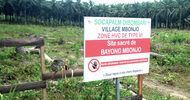
Commodities “is no longer the sexy asset class it used to be”, says Jonathan Whitehead, global head of commodities at Société Générale.
Commodity falls spark investor rethink
By: Emiko Terazono, Financial Times
It feels like the 2008 rollercoaster all over again for commodities investors.
Prices of commodities from oil to copper have fallen sharply. Money is flowing out of the sector and some investors are questioning the so-called commodities ‘supercycle’ – the mantra that prices will rise and rise, underpinned by Chinese growth.
In a nutshell, commodities “is no longer the sexy asset class it used to be”, says Jonathan Whitehead, global head of commodities at Société Générale.
Investors have voted with their feet: the eurozone crisis and worries about global economic growth triggered an $8.2 billion outflow from the sector in May, the second-biggest monthly outflow, according to estimates by Barclays.
But the sell-off, even if nearly a record high, represents only 2 percent of total commodities investments.
For all the parallels with 2008, commodity specialists note that the panic seen then to get out of commodities is not evident this time.
Compared with four years ago, when the asset class was still new to many institutional investors, “there are a lot more sophisticated investors”, says Kevin Norrish, strategist at Barclays.
“What is different from 2008 is that there are plenty of investors who are considering allocating or increasing their allocation to commodities,” he says.
But the downturn is prompting some changes: investors are looking for new ways to tap the asset class that will perform even if prices remain volatile.
While several years ago, many pension funds put their money into long-only, passive indices such as the S&P GSCI and the DJ-UBS, which track a basket of commodities futures and only deliver returns if prices rise month after month, they are now taking a more active approach.
They are putting money into a new generation of indices and hedge funds that yield strong returns even in a bearish market.
Simon Fox, a principal consultant at investment advisers Mercer in London says “passive” investments where investors put their money in funds which simply track indices are not an efficient way of getting exposure to commodities.
In addition, some managers are making investments in farmland and natural resources companies, a trend that is likely to accelerate.
ABP and PGGM, the leading Dutch pension funds that pioneered commodities investment in the early 2000s, are part of that trend. Both, with billions of dollars under management, continue to see commodities as an important part of their portfolios. But they are now taking a far more active approach.
Olav Houben, head of commodities at APG, the manager of the ABP pension fund, says that, although the benefits of investing in commodities may not seem as great as before, the asset class remains attractive as an inflation hedge as well as offering exposure to the long-term growth in raw materials demand.
“The case [for commodities investments] still stands,” he says.
But Mr Houben acknowledges a shift. Passive indices have been replaced by new sophisticated active indices and the manager is also investing in natural resources assets, including farmland, forestry, mining, oil and gas.
APG aims to keep about 4 percent of its 300 billion euros ($366 billion) in assets under management in commodities.
PGGM, which manages about 125 billion euros in pension assets, has also shifted towards a more active approach and new commodities subclasses.
The manager has allocated 10 percent of its overall commodities exposure to agriculture, making direct investments in farmland and agribusinesses in eastern Europe and Latin America.
Investments in farmland is attractive due to “the expected low correlation of its returns with other asset classes and its potential for relatively stable cash flows to investors”, says PGGM.
Wall Street banks have been offering a new generation of products known as “active” or “dynamic” indices that are able to shift their holdings as the markets changes. They have also partnered with trading houses such as Glencore or hedge funds such as Clive Capital, offering products that allow investors to tap into the market intelligence of savvier investors.
The Credit Suisse-Glencore product, for example, tracks 20 commodities from Brent crude oil to thermal coal to sugar. Every month, Glencore will recommend changes on each commodity based on its views on the underlying physical markets.
Compared with the S&P GSCI, which has fallen 5 percent since the start of the year, the Credit Suisse-Glencore active index is up 0.9 percent without the fees.
The bank says the fund has seen a 30 percent jump in assets since January.
“Clients are now much more knowledgeable and discerning,” says Kamal Naqvi, head of commodities sales at Credit Suisse. “We are seeing an increasing trend from quantitative to qualitative strategies.”












